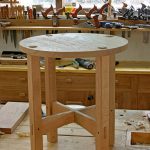We may receive a commission when you use our affiliate links. However, this does not impact our recommendations.
Wood movement can ruin a seemingly well-constructed project. Luckily getting ahead of the material and calculating wood shrinkage and expansion is fairly easy – all you need to do is multiply three numbers together. Here’s how to find them.
Step 1: Measure the board’s width.
● Know that wider boards expand and contract more than narrower ones.
● Wood expands and contracts mostly across its width. Measure Width in inches.
Step 2: Find the average yearly change in moisture content.
● Wet air expands wood, dry air shrinks it.
● Use a moisture meter to note the highest moisture content (MC) in your wet season and the lowest in your dry season.
● Subtract the smaller number from the larger one to find the yearly change. Most climate-controlled houses change 3 percent to 4 percent MC during a year.
Step 3: Determine the dimensional change coefficient of the species.
● Dimensional Change Coefficient::A number that reflects how much a certain species of wood will change in width.
● Formula works only when wood is between 6 percent and 14 percent moisture, but this is a fair range for furniture.
● First, determine if your board is mostly flatsawn (F/S) or quartersawn (Q/S). Few boards are entirely one or the other, so make a best guess. The best place to look is in the end grain (see drawing at right).
● Now look up the right number in the chart of common species.
Step 4: Do the math.
● Multiply the width of the board (in inches) by the annual change in MC (highest annual MC minus lowest). Then multiply the result by the number from the chart.
● Because few boards are entirely F/S or Q/S, calculate both numbers and shoot for something between.
Example: The workbench in this issue is 24″ wide. The annual change in moisture in our shop is 3 percentage points (12 percent minus 9 percent). The top is mostly Q/S yellow pine (the numbers from the chart are .00176 and .00263).
So our equations are:
Q/S: 24 x 3 x .00176 = .127″ (about 1/8″)
F/S: 24 x 3 x .00263 = .189″ (about 3/16″)
– Popular Woodworking Editors; Illustrations by Matt Bantly
Here are some supplies and tools we find essential in our everyday work around the shop. We may receive a commission from sales referred by our links; however, we have carefully selected these products for their usefulness and quality.









